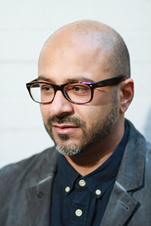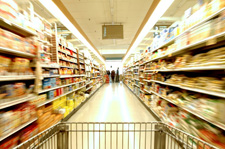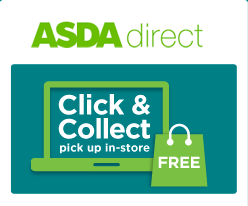
In these constantly changing times, FMCG brands need to keep up with the latest trends and demands to ensure they are not left behind. Below are my top five trends to keep an eye on to ensure your food and beverage brand cuts through with a strong digital marketing strategy.
1) Tell your story… and make it relevant
Consumers want something back from a brand, beyond the products they provide – they want stories that they can share, learn from and relate to.
FMCG brands need to own their specific area of content / story telling in order to stand out from the crowd. Making sure the area of content is niche but rich enough to ensure longevity and that it resonates with the brand and the brand’s target audience is crucial. When brands are sharing their stories, or content in the digital world, they need to target the right socialites and opinion leaders – those that will go on and spread the word and be heard amongst their peers, introducing them to new stories, new ideas and content that the brand has the right to own or be a part of. Making brand stories relevant to the wider world and providing a platform for individuals to contribute and share their own stories is becoming increasingly important.
2) The change of client and agency ways of working
 It has become very apparent over the last few years that structures, both agency and client side, are changing. This is all down to the fact brands should no longer create digital marketing as a part of a bigger campaign, but rather brands should create marketing for the digital age. Why? Well it’s the way consumers all behave. Digital is no longer a specialism, channel, platform or even an option – digital is front and centre of all communications and when used strategically, it can act as the centrepiece for any campaign, from experiential marketing to no product launches. Moreover it should be sit at the heart of every marketing communications strategy.
It has become very apparent over the last few years that structures, both agency and client side, are changing. This is all down to the fact brands should no longer create digital marketing as a part of a bigger campaign, but rather brands should create marketing for the digital age. Why? Well it’s the way consumers all behave. Digital is no longer a specialism, channel, platform or even an option – digital is front and centre of all communications and when used strategically, it can act as the centrepiece for any campaign, from experiential marketing to no product launches. Moreover it should be sit at the heart of every marketing communications strategy.
More and more frequently we are seeing digital agencies taking the lead on campaigns with FMCG brands. They aren’t just leading the digital campaigns but rather they are becoming the lead strategic agency as brands are becoming more aware that digital really needs to be the central focus. The most innovative marketing strategies need to place digital at the centre now if they are to be successful, and brands are more and more aware of this and are changing the way they work with agencies accordingly.
3) Direct to market
 In the coming years, I’ll be interested to see how routes to market will evolve. Many major multinational manufacturers have historically adapted a channel based distribution model, but platforms such as Amazon are offering new routes direct to the consumer. Will brands in future cut out the traditional retail middlemen and sell almost directly to the consumer online?
In the coming years, I’ll be interested to see how routes to market will evolve. Many major multinational manufacturers have historically adapted a channel based distribution model, but platforms such as Amazon are offering new routes direct to the consumer. Will brands in future cut out the traditional retail middlemen and sell almost directly to the consumer online?
ASDA’s introduction of click and collect not only in store car parks, but now at tube and train stations in London is a great example of supermarkets innovating and moving away from traditional distribution models. I’d like to see the High Street go full circle and can see that this has already started. People have started going back to their High Streets to collect items that they’ve ordered online, which is often more convenient than missed courier deliveries because people aren’t at home.
Building more direct sales routes into brand websites is evolving too. We’ve worked with Tate & Lyle Sugars to integrate Slingshot into the recipe pages. This allows a consumer to add all of the branded (and unbranded) ingredients they need to make something they’ve been browsing directly into their supermarket e-commerce basket of choice, making it much easier for digital content to convert into directly attributable sales.
4) Multi-device behaviour
 Mobile just has to be mentioned, doesn’t it? Mobile continues to be the biggest opportunity currently for brands and ultimately it comes down to consumer behaviour when we are talking about FMCG. But it’s not just about mobile, multi-device behaviour is increasingly important to ensure that consumers can access the information they need, when they want it, optimised to the device of their choice. Take supermarkets for example, historically mobile signals within supermarkets has been insufficient however the likes of Asda and Tesco are working on wifi provisions. Not only does the sign-up process provide the supermarkets with valuable data capture, but providing internet access can offer lots of added value services, which I expect we’ll see being launched soon.
Mobile just has to be mentioned, doesn’t it? Mobile continues to be the biggest opportunity currently for brands and ultimately it comes down to consumer behaviour when we are talking about FMCG. But it’s not just about mobile, multi-device behaviour is increasingly important to ensure that consumers can access the information they need, when they want it, optimised to the device of their choice. Take supermarkets for example, historically mobile signals within supermarkets has been insufficient however the likes of Asda and Tesco are working on wifi provisions. Not only does the sign-up process provide the supermarkets with valuable data capture, but providing internet access can offer lots of added value services, which I expect we’ll see being launched soon.
Other platforms are also developing their services in order to reach consumers at point of sale. Blipper, the mobile augmented reality and image recognition platform, is allowing consumers to point their phone at a product and read reviews, find out how it works or download recipes including the ingredients they are buying. The exciting part is that we can now deliver information to consumers at the point they are making their buying decision, and I think many more brands will start to take advantage of this. Last year’s big trend was digital working well with experiential marketing, but over the next 12 months it will move even closer to shopper marketing. I’ll be interested to see if FMCG brands or supermarkets lead this, or whether third party content providers will grow their share of the digital shopper marketing pie.
5) Addressing the audiences in context and getting products into the consumers’ hands
Talking about consumer behaviour and mobile, we also have to consider the fact that although platforms are incredibly important, the context is even more so. Where are our consumers when they are using these devices? Campaigns need to reach consumers in all possible locations and encourage them to visit different channels, whether it is digital or in-store.
Look at Genius Gluten Free for example. Recently, they introduced the My Perfect Toast campaign which included a summer sampling programme as part of an integrated marketing campaign. Consumers were targeted at festivals throughout the UK and were directed to the ‘My Perfect Toast’ app, which allowed them to make their ‘perfect toast’ and then receive an e-coupon for money off their next Genius Gluten Free loaf.
The campaign interlinked the physical and digital trial of the products, leading festival goers to online channels and then in-store to purchase products. The results spoke for themselves; 25% voucher redemption and an 18% uplift in sales. Plus significant growth in their earned and owned channels.
Taking an offline, personal experience and bringing it to life in the digital environment, the campaign strengthened the customer’s relationship with Genius and worked to bridge the gap between creating their perfect toast online, to making a purchase in store. This campaign also reinforces the importance of placing the digital element at the centre, and this, combined with user generated content, will work to leave behind a long-lasting legacy with consumers. Getting products into the consumers’ hands and closing the loop on digital are two of the best ways to build brand loyalty.
I think the coming year will be an important one for many brands as they continue to evolve and develop their digital approaches and I for one am very excited to see the developments within the FMCG industry.
By Ameet Chandarana
(A Chandarana is Managing Director at Maynard Malone)

You must be logged in to post a comment Login